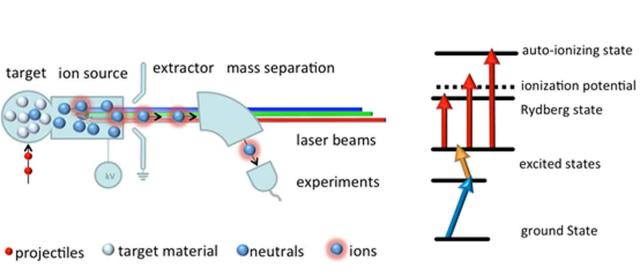The laser ion source, RILIS, is developed

(image: The basic principle of the RILIS technique: Two laser beams tuned to transitions between atomic levels - blue and yellow arrows - excite the atoms and a third beam induces the ionization)
The traditional ion sources used at ISOLDE were based on surface ionization and ionization in a plasma. These techniques together with different target matrices gave a large variety of beams for more than 20 years. A major step in improving the purity of and the number of available elements came in 1989 with a new technique based on laser ionization.
A combination of laser beams at wavelengths tuned to the sequence of atomic transitions enables highly efficient resonance excitation and ionization of selected atoms. Isotopes of other elements of the same mass do not interact with the laser radiation. This type of ion source is referred to as a Resonance Ionization Laser Ion Source (RILIS) and is a very powerful tool for the efficient and selective production of radioactive ion beams. The initial off-line RILIS development is then followed by its successful on-line application for laser ionization of ytterbium isotopes at ISOLDE-III on 10 October 1990.